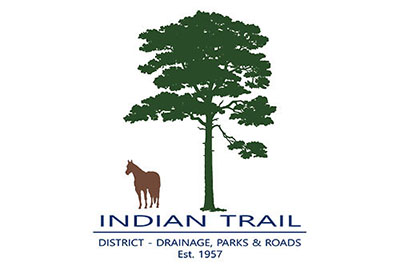It could be much ado about nothing, or it could be another front in the Indian Trail Improvement District’s ongoing efforts to maintain its independence and semi-rural lifestyle.
At the Wednesday, June 11 meeting of the ITID Board of Supervisors, President Elizabeth Accomando warned that the Palm Beach County Commission will be discussing an item titled “PBC Septic to Sewer Overview” during a Tuesday, Aug. 26 workshop session.
The vast majority of ITID’s 50,000 residents and 17,000 lots are on well water with septic systems.
“It’s a very serious situation,” Accomando said. “It’s not just the initial costs. There are a lot of other expenses… People already are getting priced out. It’s no time to add to that.”
Supervisor Betty Argue said that any attempt to force a septic conversion on residents of the Acreage/Loxahatchee area would be a violation of an interlocal agreement that ITID entered into with the county years ago. “It would be an enormous burden on our landowners,” Argue said.
ITID board members are not the only ones concerned.
“We’ll fight it tooth and nail,” Acreage Landowners’ Association President Bob Morgan said in an interview after the meeting. “We want our wells, and we want our septic.”
Palm Beach County Vice Mayor Sara Baxter, who lives in The Acreage and represents District 6, said this week that the county is not trying to force the issue.
“I support our rural lifestyle and have been fighting for it during my whole time in office,” she said. “The county is not pushing anything. There’s no secret motivation.”
On the ITID web site, there is a page on “Water Utility Policy,” giving instructions to residents for creating a petition to have county water in areas where major county water transmission lines already exist. The petition process was first approved by the board in 2011 and revised in 2012 and 2019.
Those seeking connection must agree to pay the costs of “design, permitting and construction, administration, and contingency costs related to the installation of water mains, fire hydrants and restoration,” the policy states. The cost can be paid off immediately, or as part of the monthly water bill over 20 years with interest.
About 80 properties have connected to county water lines since 2019, said Rob Robinson, ITID’s associate executive director and chief construction officer. No sewerage connection is available.
ITID officials said it likely would cost $18,000 to $23,000 or more per property to run the residential lines from county water lines to the edge of the residential property. Residents then would have to make their own arrangements to hook up to the county lines.
“We don’t want to jump the gun on this,” ITID Executive Director Burgess Hanson said this week. “We need to figure out what the county is planning.”
If not now, it is something that will likely come up in the future.
“At some point, there will be a push for water and septic conversion,” Hanson said.
In other business, the supervisors agreed that ITID staff should look more thoroughly into options for the sale or other use of the 29 acres of property beneath the Florida Power & Light transmission lines owned by the district from Persimmon Blvd. to 60th Street North.
For years, adjacent property owners had built right up to or in some cases onto ITID property. District workers recently cleared the area because of liability concerns and to ensure that FPL had access to their lines.
Since then, the open land has been attracting unwanted use by ATV and dirt bike riders.
“We may have created a bigger liability than we had,” Argue said.
Hanson said that ITID workers would be installing fencing and gates in an attempt to cut down on use by motorized vehicles.
ITID’s 2020 mobility study suggested that the property could be used for horse trails. However, some of the 25 or so property owners have expressed concerns about the smell of manure and the possibility of fecal matter getting into their wells.
“We do have a comprehensive plan… [but we need to look at] where is the trail going to go, if we build a horse trail,” Argue said.
Later she suggested that the project could be a series of shorter, incremental bridle trails instead of a single full-length trail that would require riders to cross multiple roads along the 10-block strip.
“Equestrians are not that interested in the property,” Supervisor Richard Vassalotti said. “I’d like to sell it to the residents.”
The property has been valued at approximately $3,000 per acre, for a total of $87,000.








